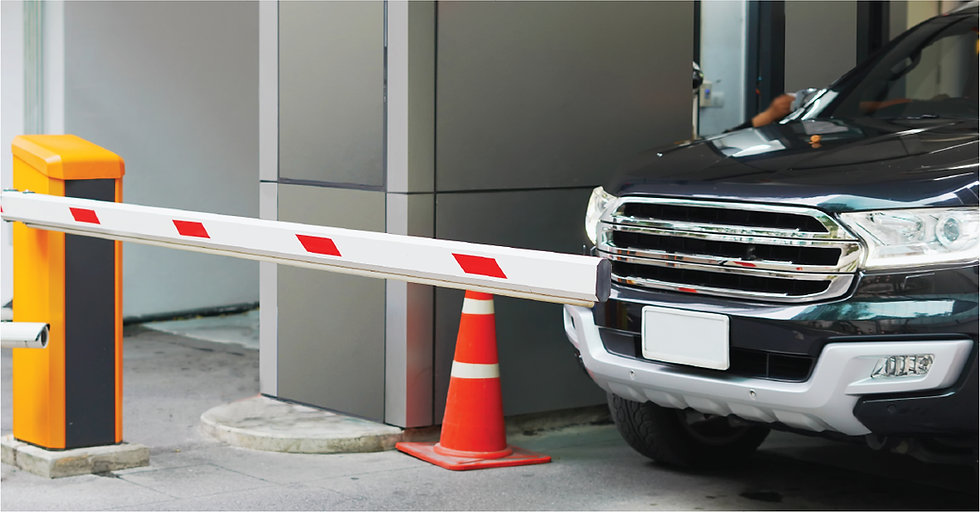8 Essential Small Business Access Control Tips to Maximise Security
- ATG Digital
- Nov 6, 2023
- 4 min read

Safeguarding your assets and ensuring a secure environment is no small feat, which is why small business access control is a BIG deal.
You need a comprehensive approach to maximise security. Let's delve into small business security and empower you to make informed decisions to protect your business effectively.
Here are eight essential small business access control tips to help you build a strong foundation for a robust security strategy.
1. Risk & Access Point Assessment
A risk assessment is a vital first step as it lays the foundation for a robust risk management plan. A risk assessment of your premises helps to identify vulnerable areas and determine the number of access points needed. For your assessment, you will want to:
1. Identify the assets, equipment, inventory and data that need protection.
2. Identify all possible threats, such as vandalism, theft or natural disasters.
3. Assess the vulnerabilities where the identified assets can be accessed and identified threats can be thwarted.
4. Determine the likelihood and impact of the identified risks to the assets.
5. Develop a risk management plan based on the above research and include measures to mitigate the risks, such as security cameras, improved lighting and bolstering access control.
2. Guard Awareness Training
Security guards are pivotal to small business access control. Awareness training is therefore vital to ensure that guards:
· Understand the importance of security measures and procedures.
· Recognise and respond to potential threats.
· Comply with company procedures and government regulations.
Training should include education on the access control system and surveillance methods, patrolling techniques and how to secure the perimeter, and education on physical intervention. Soft skills are just as important: communication, ethics, professionalism, and cultural awareness.
3. Visitor Management Protocols
Establish an efficient visitor management process, considering the following:
· Visitor registration and verification are made swift with digital license scanning
· Capturing mandatory information like vehicle contents or checking the boot if that is a stipulation for entry.
· Completing mandatory screening or enforcing induction education before entry (as is often required at mines).
· Granting temporary access authorisation.
· Protocols for answering questions such as data privacy and right of refusal of entry.
4. Access Authentication
Consider the benefits or obstacles to implementing various access authentication methods such as license and ID scanning or facial recognition.
Most small business access control decisions come down to cost—instances such as this set access control and visitor management systems apart. For example, ATG Digital's solutions are made with small businesses in mind because we believe that solid security should be accessible to all businesses.
5. Security System Integration
Speaking about budget requirements, get more bang for your buck by using your access control system to capture everything you need for a holistic security approach.
Attendance tracking can save lives in emergencies. Solutions like Roll Call are designed for this specific purpose. Capturing entry and exit times enhances time and attendance tracking while real-time insights guide optimal operational efficiency.
That's not all. You can also realise value in the rest of your business. Time and attendance monitoring data can feed directly into HR, ensuring accuracy and reducing unnecessary resources (saving costs).
6. Regular System Maintenance and Updates
This tip is a game-changer. Though it seems obvious, it is often overlooked. You should regularly review and update the risk management plan. Threats evolve; criminals find new ways to infiltrate. You may likely have changed or upgraded other facets of the business without considering the impact on your access control.
Ongoing maintenance and updates ensure the effectiveness of access control systems over time. To save time, energy and money, you may want to consider Access Control as a Service (ACaaS), where updates and regular maintenance are automated!
7. Compliance with Industry Regulations
Regulatory compliance is a bugbear for businesses everywhere, but the burden is greater on small businesses with limited resources. However, the laws don't make exceptions for ignorance.
You must be aware of and adhere to legislative requirements. Build compliance into your risk management plan and security procedures. A big win for small business access control is implementing a system that solves most of your compliance pains.
At the Gate, At Reception, and all of ATG Digital's offerings are fully POPIA-compliant, and employ stringent data protection methods.
As ATG Digital has been serving the security industry for a decade, you are welcome to chat with any representative about the laws that apply to your industry. This takes us to the final small business access control tip: customisation!
8. Custom Configuration
Every business is different—which goes for large or small business access control requirements, too!
The nature of your business, the sector in which you operate, and the layout of your property are some factors that will influence your purchasing decisions. While a few vendors have purpose-built solutions, no niche product will ever be 100% "plug & play."
The tip here is to look for something as close as possible to what you want but also offer customisation so that you can configure it to your unique needs.
Bonus Small Business Access Control Tips!
Don't be afraid to ask the hard questions when researching small business access control solutions!
Your potential provider should be capable and willing to supply comprehensive answers. Think of it as an interview. Being cagey and uncompromising may indicate what your relationship will be like.
Don't just take their word for it. Investigate reviews, ratings and testimonials.
Is there anything else you'd like to know? Get in touch! Complete our contact form, and we'll call you!

Comments